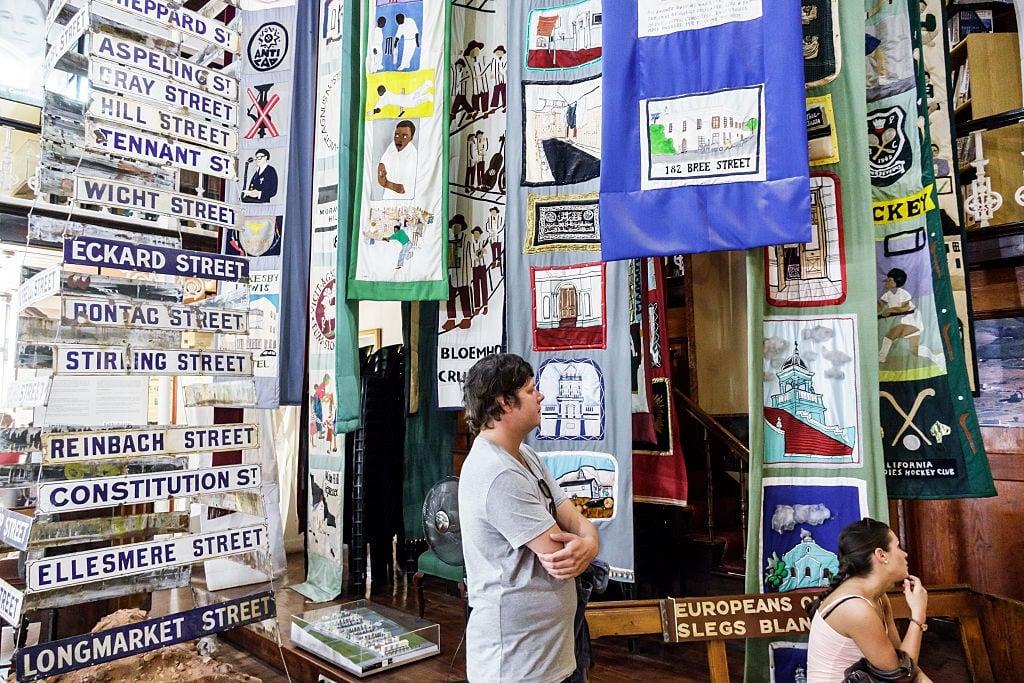Africa-Press – South-Africa. The South African Heritage Resources Agency (Sahra) has declared eight District Six sites national heritage sites.
They are the Seven Steps of stone; the Holy Cross Roman Catholic church, parish centre and convent; the Moravian Church building, Zeenatul Islam Masjid; Al-Azhar Mosque; the Jewish cemetery; Harold Cressy High School; and Trafalgar High School.
The Seven Steps remains one of the main symbols that represent the community of District Six, Sahra said.
“The Seven Steps of stone, worn by thousands who used these over the years, to work, to home, to school, to play, to bok, to church, to mosque, to shop, to celebrate, and to mourn, were part of the great big soul of the district. Today, so many years after its destruction, the Seven Steps stands out as the premier symbol of District Six that still lives in the hearts of all who lived, loved, played and worked in the district,” Sahra said.
Judge Siraj Desai, chairperson of the District Six Museum board, said he was “delighted” by the declaration because the eight sites were “historical monuments”.
However, Desai said more needed to be done to protect that heritage.
He said:
Desai added that he had a personal connection to many of the sites, having attended school at Trafalgar High School and attending struggle meetings in the church hall at Holy Cross Roman Catholic Church.
One of the sites that had played a key role in the struggle was Trafalgar High School, said Trafalgar High Alumni Association executive committee member Warren Ludski.
The school was opened in 1912 as the first state high school for people of colour.
Ludski, who matriculated in 1966, said the teachers at the school had risked the ire of the apartheid government by teaching pupils more than what was prescribed in the restricted curriculum they were expected to teach.
“The school had staff who were more than just competent. They were constrained by the syllabus laid down by the apartheid government but were switched on enough politically to provide a parallel teaching platform,” Ludski said.
“They sometimes paid a heavy price for teaching us things not in the textbooks.”
He said political awareness had been nurtured in pupils, and they had often led protests during “turbulent times”.
He said:
The declaration is the first phase towards safeguarding heritage sites in District Six, Sahra said.
“District Six, the once vibrant multi-cultural residential heart of Cape Town, was ripped out by forcing more than 60 000 people from the economic centre and relocating a whole community to the Cape Flats, an area devoid of opportunity, located at the periphery of the city,” Sahra added.
District Six possesses “the national heritage value of telling a national history of forced removals”, Sahra added.
“District Six constitutes a previously neglected memory of the history of South Africa that is to be used as part of the reconstruction and healing of the nation, a memory closely guarded and kept alive by the former residents,” Sahra said.
The District Six Working Committee’s Zaghra Nordien said the declaration of heritage sites did little for those still waiting for restitution and to return to District Six.
She said:
Sahra added that the struggle and resistance of the people prevented the area from being redeveloped into a middle-class white area as was envisioned by apartheid planners.
Western Cape MEC for Cultural Affairs and Sport Anroux Marais said: “It is very important that we preserve the tangible and intangible heritage which makes our province so special. Protection of sites such as these mean that future generations can also appreciate and learn from these sites.”
For More News And Analysis About South-Africa Follow Africa-Press






